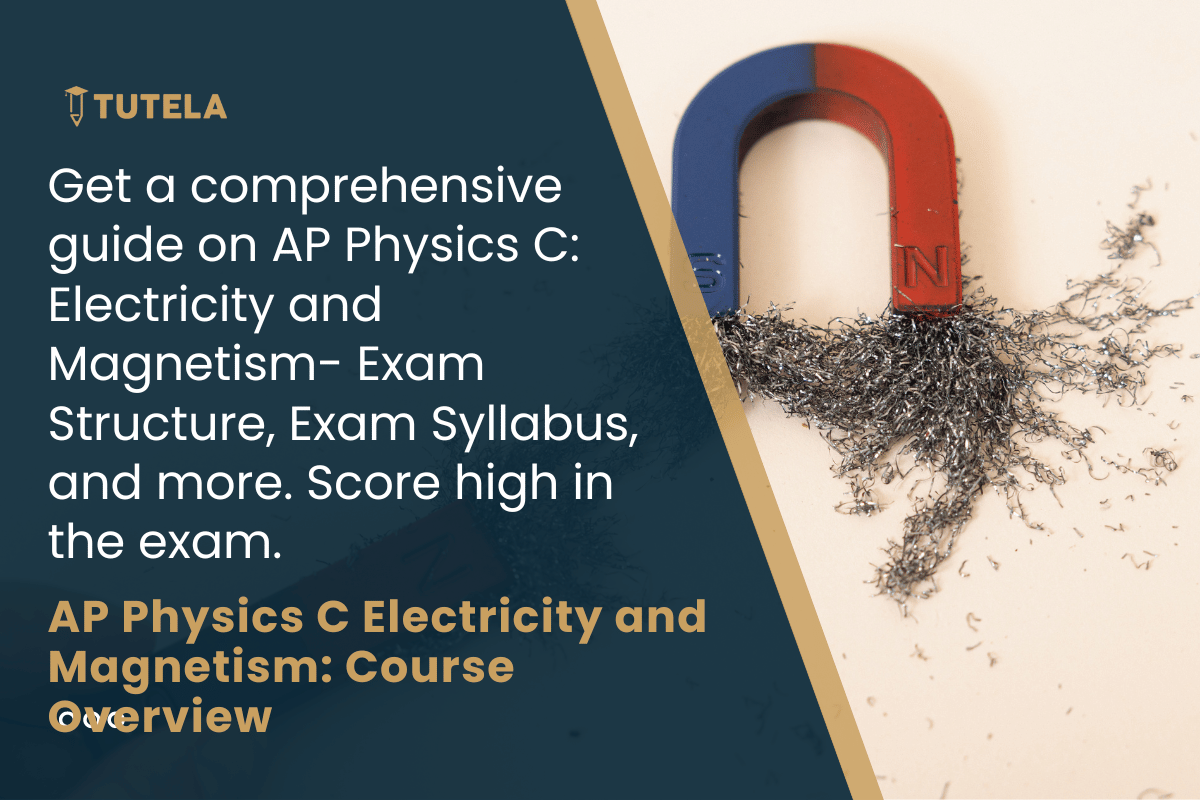
Welcome, physics enthusiasts, to the world of AP Physics C: Electricity and Magnetism. From fundamental principles to intricate concepts, we'll navigate the intricacies of the electromagnetic world, offering essential insights for the upcoming AP Physics C: Electricity and Magnetism Exam.
In this blog, we aim to be the student's go-to guide, breaking down the entire syllabus of AP Physics C: Electricity and Magnetism in a concise and engaging manner. We dive into the world of electric charges and magnetic fields. Get ready for a journey that spans from understanding conductors and capacitors to exploring the magic of electromagnetic induction. The AP Physics C: Electricity and Magnetism Exam is set for 14th May 2024.
| Unit Name | Description | Weightage in the Exam |
| Unit 1: Electrostatics | Electrostatics introduces students to the fundamental principles of static electricity. Topics covered include the nature of charges, Coulomb's law, electric fields, and potential. Students learn about the behavior of charged particles in different situations and gain an understanding of the forces at play. | 26-34% |
| Unit 2: Conductors, Capacitors, Dielectrics | Conductors, Capacitors, and Dielectrics delve into the properties of conductors and insulators, exploring how charges distribute themselves on conductive surfaces. Capacitors and dielectrics are introduced, with a focus on their role in storing and releasing electrical energy. The unit covers capacitance, capacitor types, and the impact of dielectrics on electric fields. | 14-17% |
| Unit 3: Electric Circuits | Electric Circuits builds on the basics, introducing students to the principles of electric circuits. The students learn about Ohm's law, resistors, series, and parallel circuits, as well as how to analyze and solve circuit problems. Concepts like voltage, current, and resistance are explored in depth, preparing students for more complex circuit analysis. | 17-23% |
| Unit 4: Magnetic Fields | Magnetic Fields shift the focus to magnetism and magnetic fields. Students explore the behavior of magnets, magnetic forces, and the interaction between magnetic fields and moving charges. Key concepts include magnetic induction, magnetic flux, and the application of magnetic fields in various devices. |
17-23% |
| Unit 5: Electromagnetism | Electromagnetism combines electric and magnetic principles, introducing students to the unified theory of electromagnetism. Topics include electromagnetic induction, Faraday's law, Lenz's law, and the generation of electric currents through changing magnetic fields. Applications such as generators and transformers are covered, highlighting the practical aspects of electromagnetism in technology and everyday life. | 14-20% |
The AP Physics C: Electricity and Magnetism exam 2024 is structured as follows:
1. Multiple-choice section: The first section involves 35 multiple-choice questions covering topics like electrostatics, conductors, capacitors, electric circuits, magnetic fields, and electromagnetism. Test-takers have 45 minutes to navigate through this set of questions.
2. Free-response section: This section consists of three questions assessing science practices such as visual representations, data analysis, and argumentation. With an additional 45 minutes, candidates delve into more detailed problem-solving and practical application.
1. Electrical Engineering: AP Physics C: Electricity and Magnetism provides a solid foundation for understanding electrical circuits, electromagnetism, and the principles essential to electrical engineering majors.
2. Physics and Astrophysics: This course is a stepping stone for those pursuing majors in physics and astrophysics, equipping students with insights into the electromagnetic forces shaping the universe.
3. Electronics and Communication Engineering: With a focus on electrical circuits and electromagnetism, this major benefits from the foundational knowledge gained in AP Physics C: Electricity and Magnetism.
4. Renewable Energy Engineering: Understanding electromagnetism is crucial in the field of renewable energy, making this course valuable for those interested in sustainable energy solutions.
5. Applied Physics: The practical applications of electricity and magnetism covered in this course align well with the principles studied in applied physics, preparing students for real-world problem-solving.
6. Materials Science: The understanding of electromagnetic principles proves beneficial for materials science majors, particularly when exploring the behavior of materials in electric and magnetic fields.
7. Computer Engineering: The analytical skills developed in AP Physics C complement the requirements of computer engineering, contributing to success in hardware design and system integration.
8. Biophysics: For those intrigued by the intersection of physics and biology, especially in understanding electrical impulses in living organisms, AP Physics C: Electricity and Magnetism offers relevant insights for biophysics majors.
9. Nanotechnology: The principles of electromagnetism play a role in the behavior of materials at the nanoscale, making this course relevant for those pursuing majors in nanotechnology.
10. Telecommunications Engineering: Understanding electric circuits and signal transmission is key in telecommunications engineering, making AP Physics C: Electricity and Magnetism a valuable foundation for this field.
TutelaPrep’s College Navigator allows students to search for colleges based on their preferred country and course. Not only that, it also provides valuable insights into each college’s specific admission requirements for those exams. Through College Navigator, you can even connect with alumni at your chosen colleges to get a firsthand feel for campus life and academics.
We hope this article helped you with the subject knowledge. Reach out to us by filling out our assistance form if you need any help with the preparations.